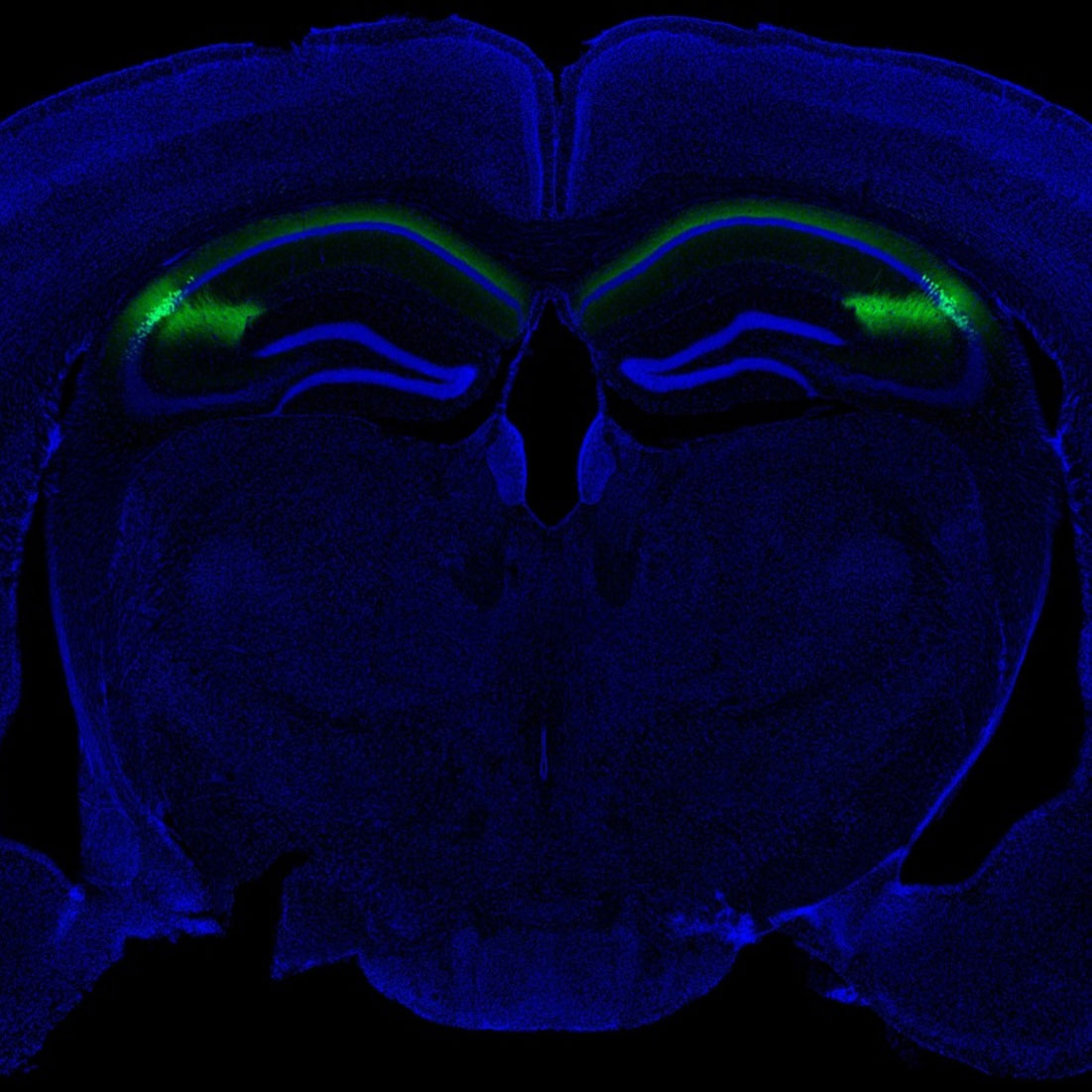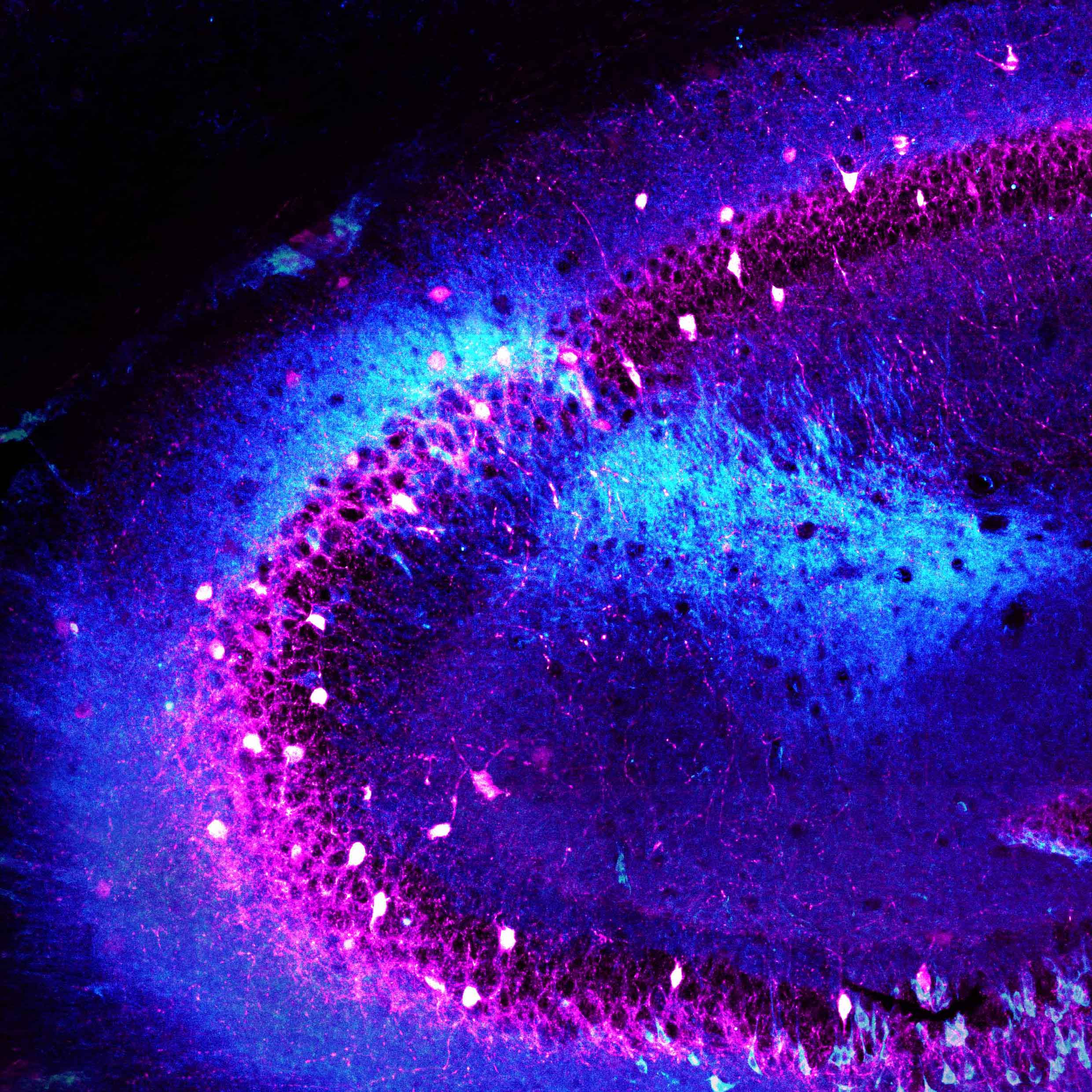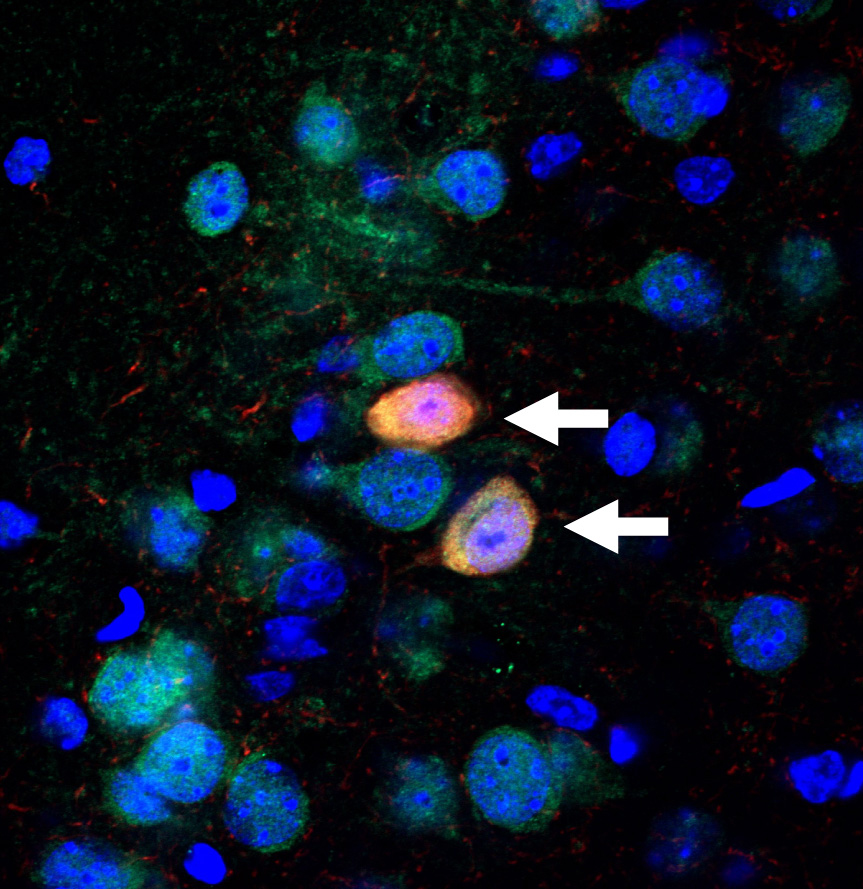NEW YORK — If all goes well, you can meet someone once and recognize that person years later on the street. Humans, like many animals, have an astounding ability to recall social encounters. Now scientists studying mice have identified the brain cells, or neurons, that help make this social memory possible.
The malfunction of these neurons in lab mice, new research from Columbia University’s Zuckerman Institute suggests, could help to explain why people with schizophrenia struggle in social situations. The research also reveals, for the first time, a potential pathway to developing treatments for the social deficits associated with this devastating mental illness, which affects some 20 million people worldwide.
The study was published today in Nature Neuroscience.
“Neuropsychiatric diseases that cause problems with social interaction make life difficult for an enormous number of people, as anyone living through the isolation of COVID times can relate to,” said first author Macayla Donegan, PhD, who conducted this research in Steven Siegelbaum’s lab in the Department of Neuroscience at Columbia’s Zuckerman Institute.
“Today we have no treatments for these social deficits, but our new research provides hope that we may one day be able to offer help,” added Donegan, who is now a postdoctoral fellow at New York University’s School of Medicine.
Social Cells in the CA2
Researchers have long known that a brain region called the hippocampus is critical to forming memories. Decades of research has revealed groups of hippocampal cells important for different kinds of memory. Some store mental maps of our surroundings, for instance.
In 2014, Dr. Siegelbaum and his team found that the deactivation of cells in a part of the hippocampus called CA2 resulted in mice that could no longer recognize each other. This research suggested that this CA2 region plays a crucial role in social memory.
“We had strong evidence that CA2 was the key to social memory, from the work we did and from other studies showing that it is particularly receptive to hormones important for social interactions,” said Steven A. Siegelbaum, PhD, the Gerald D. Fischbach, MD Professor and Chair of the Department of Neuroscience at Columbia’s Vagelos College of Physicians and Surgeons, principal investigator at Columbia’s Zuckerman Institute and the paper’s senior author.
“The new research we publish today delves deeper into how exactly CA2 neurons encode social memory and sheds light on the role of CA2 cells in diseases associated with social problems,” he added.
In the latest work, Drs. Siegelbaum and Donegan put mice in different social situations and monitored CA2 cells. Some of the cells perked up when mice were in the company of other animals, as compared to when they were alone. And a fraction of CA2 cells was particularly active as a mouse encountered a stranger, compared to a familiar companion.
From there, scientists employed a machine learning algorithm to analyze the brain activity. The sophisticated computer model could be trained, based on CA2 firing, to distinguish between these situations: being with company versus being alone, encountering a familiar animal versus a stranger. This strengthened the case that groups of CA2 cells work together to help animals in social perception.
A separate series of experiments, published in a September paper in
“We found that the cells create maps of social information much in the way that other cells in the hippocampus create maps of space,” said neuroscientist Azahara Oliva Gonzalez, PhD, the paper’s first author and a postdoctoral fellow in the Siegelbaum lab.
We found that the cells create maps of social information much in the way that other cells in the hippocampus create maps of space
Treating Schizophrenia Symptoms
Having demonstrated the social significance of CA2 cells, the Columbia researchers turned their attention to schizophrenia. They studied mice that had an engineered genetic deletion, similar to one that in people greatly increases the risk of developing schizophrenia. These mice, like many people with this neuropsychiatric disorder, have difficulties in social situations. Specifically, they have trouble remembering conspecifics, other members of the same species.
CA2 cells in these mice, the researchers discovered, did not perk up in social situations or increase their activity in response to a stranger, as the cells had in a typical laboratory mouse. One clue as to why the CA2 neurons malfunctioned came from a previous collaborative study with Zuckerman investigator Joseph A. Gogos, MD, PhD, which found that CA2 neurons in the engineered mice were burdened by the increased inhibitory activity of the membrane protein TREK-1.
Reasoning that TREK-1 might be interfering with social memory, the scientists treated the mice with a drug that blocked its activity in CA2 cells in the mice with schizophrenia-like symptoms.
The effect was dramatic. The cells began behaving normally. So did the mice; they could now recognize and remember other mice.
Inspired by this result, the researchers hope that drugs that block TREK-1 could potentially ameliorate some of the social deficits associated with schizophrenia. But they caution that this idea is still in early stages, and more work needs to be done to test it.
For Dr. Siegelbaum, this project has been the culmination of a decades-long journey. He first became interested in CA2 and its role in social interaction after learning that people with schizophrenia have anatomical differences in this region. Being able to connect the disease and its accompanying social difficulties to a group of brain cells and a molecule on the surface of those cells has been incredibly rewarding, he said.
“By changing one molecule, we restored normal brain activity and normal behavior in mice,” said Dr. Siegelbaum. “This is strong evidence that the pattern of brain activity we are studying is connected to the social behavior we see, and it offers a promising way forward to treating the social symptoms of people with schizophrenia, and perhaps other disorders with abnormal social behavior.”
####
The paper, “Coding of social novelty in the hippocampal CA2 region and its disruption and rescue in a 22q11.2 microdeletion mouse model,” was published on October 19, 2020, in Nature Neuroscience. Additional contributors include Fabio Stefanini, Torcato Meira, Joshua A. Gordon and Stefano Fusi.
The authors report no conflicts of interest.



